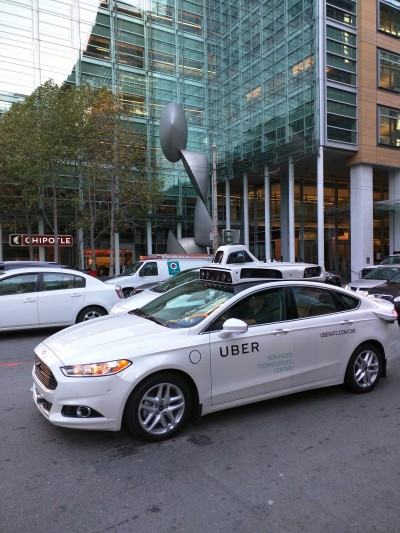The team placed among the Top 11 worldwide; More than 1,500 student teams competed to create the best math models
TACOMA, Wash. – How’s this for some arithmetic? In January there were 1,527 student teams across the globe—from Beijing to New York to Oxford—vying to solve a vexing problem about self-driving vehicles in order to win this year’s international Mathematical Contest in Modeling.
A University of Puget Sound team of three students placed among the world’s Top 11 teams. In mathematical speak, that puts team members Jordan Fonseca ’18, Jesse Jenks ’18, and Matthew Moreno ’17 in the 99th percentile of this pool of sizzling young mathematicians. CONGRATULATIONS!
Seven of the 11 competing teams who scored “outstanding” or “finalist” on the math problem were from China. The four American teams within those ranks included students from University of California, Berkeley; Duke University; University of Colorado Denver; and University of Puget Sound.
“Not bad company,” said Professor of Mathematics Mike Spivey, who acted as advisor to the Puget Sound teams.
The mathematical problem posed asked the teams to assess the impact of self-driving cars on a particularly dense traffic network in Greater Seattle. The students were provided with real-world data, and they had to construct a mathematical model that would answer various questions about traffic flow.
A second Puget Sound team, including Leslie Joe ’17, Rachel Hirsch ’17, and Henry Woody ’17, scored “successful participant” on a different problem. This question asked the teams to try to create a better design than that used currently to control traffic flow in and out of toll collection booths. They also had to consider the impact of self-driving vehicles, automatic toll collectors, and surges of heavy traffic.
The international Mathematical Contest in Modeling, which took place online in late January, is run by the Consortium for Mathematics and its Applications (COMAP). This year there were 8,843 teams participating, who could each choose one of three problems to solve.
The contest is targeted at high school and undergraduate college students, and attracts students and faculty advisors from more than 900 institutions across the globe. It challenges young people to apply research, analytics, and intelligence to problems that must be solved with mathematical models within just four days.
Photo on page: Seattle Traffic at the I-5 and Yesler Way, by Oran Viriyincy; an Uber self-driving car test drive in San Francisco, Oct. 2016, photo by Diablanco. (Creative Commons photos)
Tweet this: Add this up! Three @univpugetsound #math students place in Top 11 of #COMAP international math contest, out of 1,527 global teams #totheheights http://bit.ly/2obVSwO
Follow us on Twitter! twitter.com/univpugetsound



